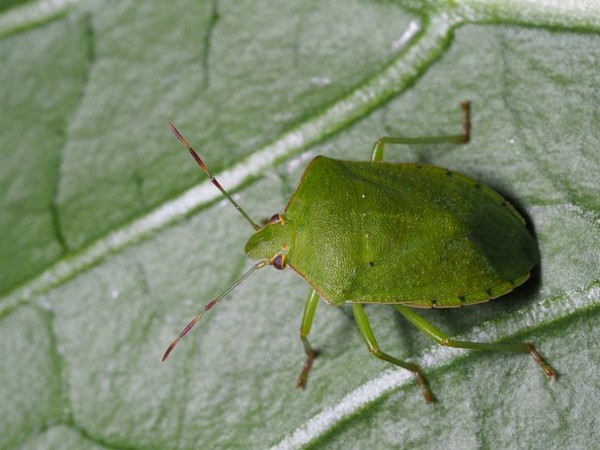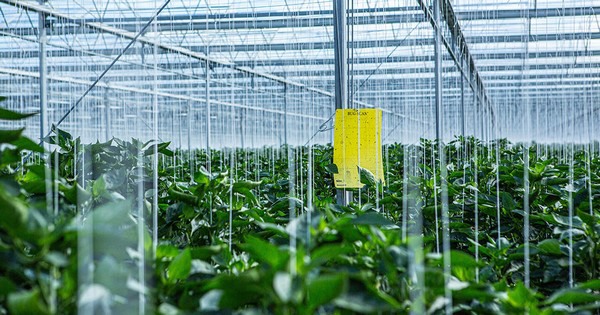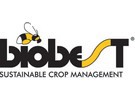From the start of a pepper crop it is best to give pests as little opportunity as possible to develop – according to Biobest advisor, John van Eijk - from the Netherlands. He advocates introducing sticky traps from the start. “Most growers opt for a chemical spray cycle at the start. After that, we recommend building up a population of predatory mites as quickly as possible in the crop. These predators are then in place and ready to get to work when pests appear. Good scouting throughout the season is essential, even for challenging pests like the southern green shield bug – the stink bug."
Most pepper growers choose Biobest’s Bug-Scan® Yellow sticky traps for the timely detection of pests such as thrips, whitefly and leaf miner. To further improve thrips monitoring, many growers also deploy Bug-Scan® Blue sticky traps as these are especially attractive to the pest.

Building up a standing army
“After the initial spray programme, it is really important to build up a good population of predatory mites in a short time as possible,” explains John. “This so-called 'standing army' is then in-situ, ready to control the main pests - thrips, whitefly and/or spider mite.” Biobest offers several effective predatory mite controls - Montdorensis-System, Swirskii-System and Degenerans-System. Growers tend to choose the predatory mite system they have found most effective in the past.
Targeted intervention
“Careful scouting remains essential throughout the season,” says John. "If a disease or pest appears, growers can then take prompt targeted action. The Californian thrip, for instance, can transmit Tomato Spotted Wilt Virus. Infected plants are best removed as soon as identified.”
Monitoring southern green shield bug
Accurate scouting and targeted control are also highly recommended to combat outbreaks of southern green shield bug Nezara viridula – an increasing problem in sweet pepper crops. "Currently there is no effective biological control for this shield bug,” explains John. “It’s therefore crucial to monitor carefully. If the pest is discovered, it is best tackled on the spot. Effective insecticides are incompatible with biocontrol programmes – full crop applications should be a last resort."

Crop-Scanner
In spring 2020, Biobest launched the Crop-Scanner App enabling companies to digitalise scouting. Using Crop-Scanner, scouting observations and pest counts from sticky traps can be immediately entered digitally while working in the crop. In the web portal, the grower can then retrieve this scout data, view the map of the greenhouse and visualise hotspots. The portal can also show the grower how pest populations develop over time.
“Crop-Scanner is proving to be a very handy tool to keep track of pest developments in the crop,” concludes John.
 Biobest
Biobest
